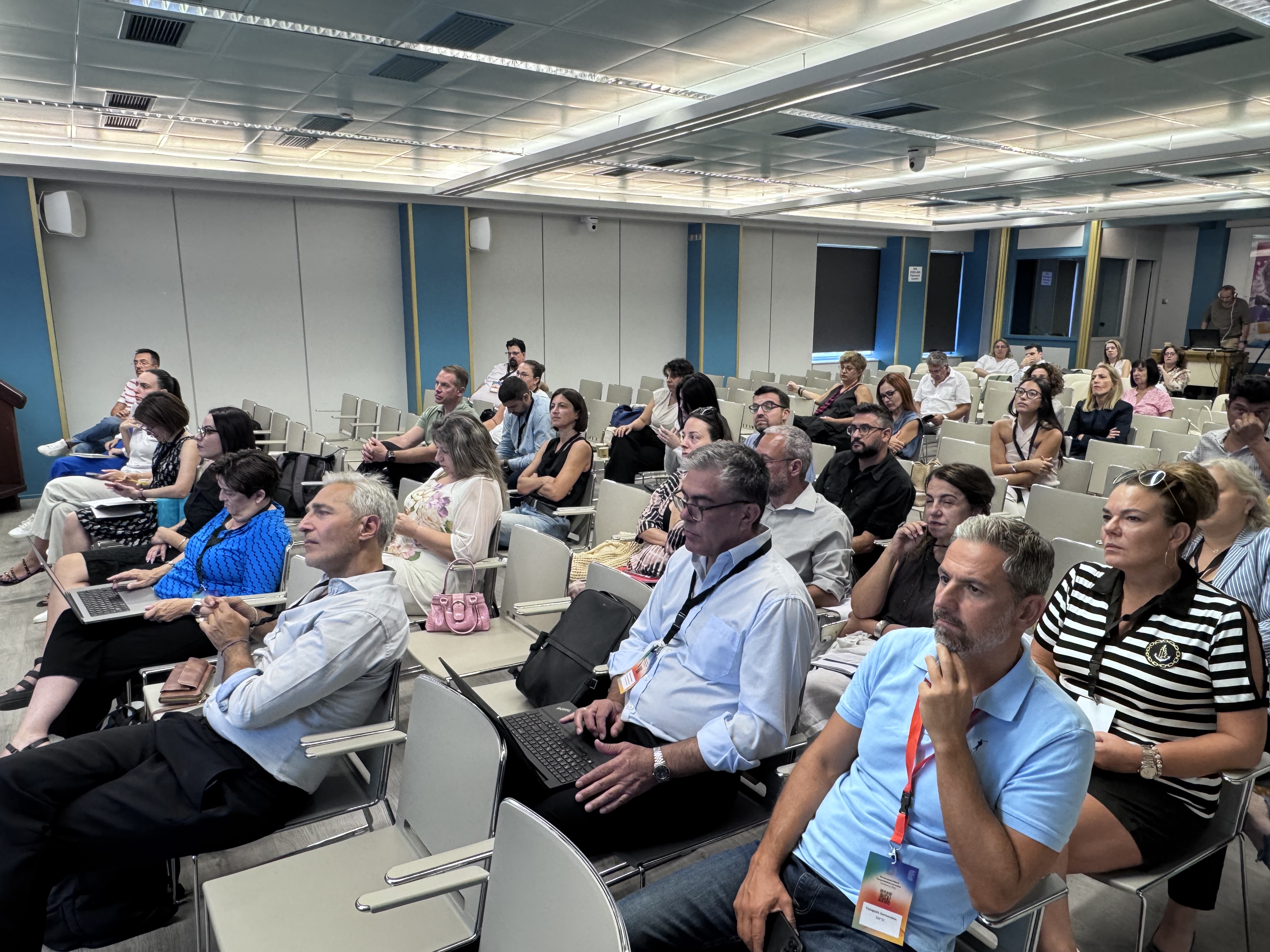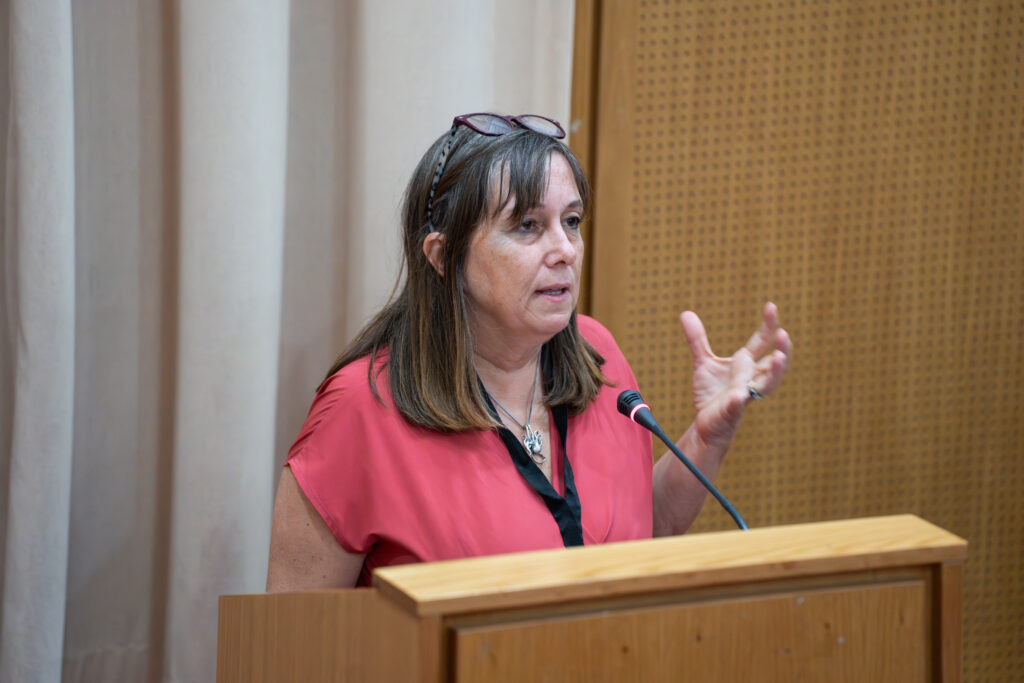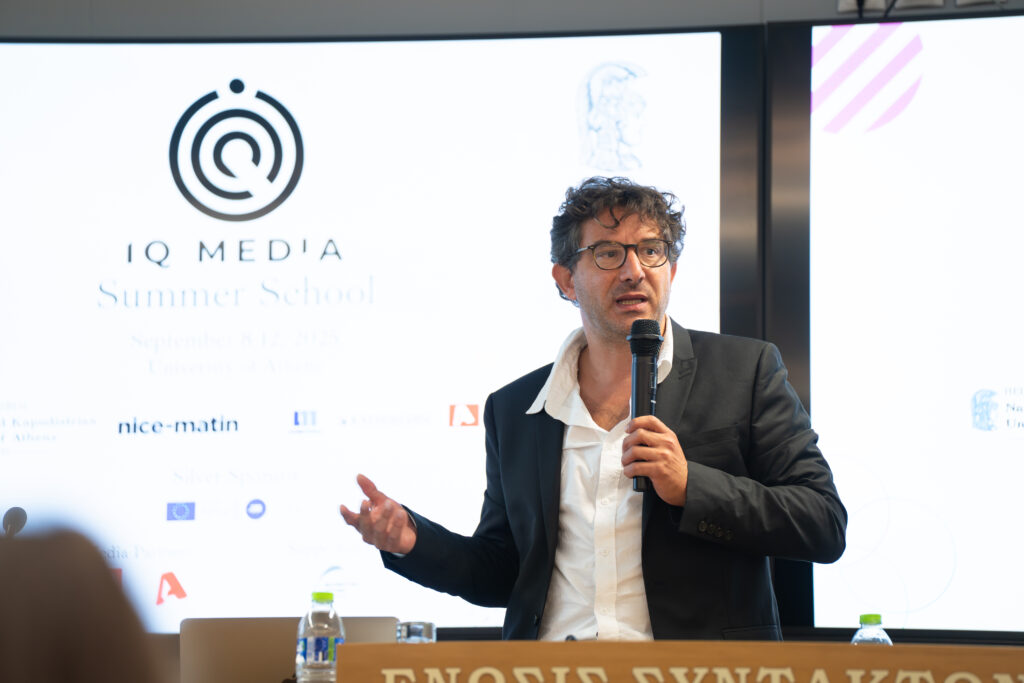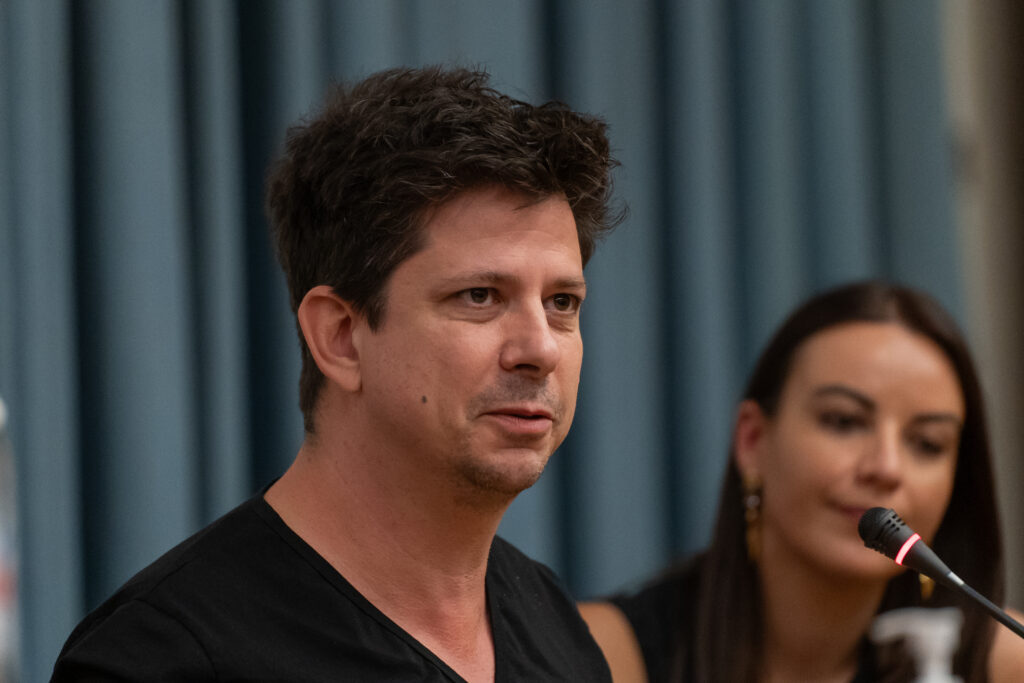
IQ Media Summer School: Digital Transformation and New Business Models

Laura Ellis | Photo credits: Dimitris Adamis
Laura Ellis, Head of Technology Forecasting at BBC R&D, gave a keynote speech on the BBC’s approach to AI with an emphasis on protecting journalistic values in the face of AI, presenting the acronym PANTH(ER): Productivity, Accuracy, Novelty, Transparency, Humanity. Overall, the BBC looks to employ AI to add value to its journalism through increased capacity in areas such as translation and transcription, with the latest pilot initiative in multimodal summarisation. Hallucinations and distortions are currently the two greatest concerns regarding accuracy in the use of AI at the organisation, with past incidents such as news headline distortion underlining the danger of unmediated AI in audience-facing content. As part of her speech, Ellis poses the question, “what are the things we can do as organisations to preserve […] the beauty of our journalism?”, addressing the need for news organisations to take a novel approach to investing in responsible journalism and responsible use of AI, with sustainability, non-extractiveness and beneficial use of AI identified as three key themes at the BBC. An early lesson learned about transparency was that disclosing the use of AI requires being descriptive rather than general. Lastly, Ellis concluded that AI cannot currently reproduce the human nature of journalism—its place in journalism needs to be negotiated.

Ludovic Blecher | Photo credits: Dimitris Adamis
An AI video of female soccer players transformed into male players is what Ludovic Blecher (IDation Founder and Partner at WhiteBeard, former Head of Innovation and Funding Strategy for News Ecosystem at Google) started his speech “Creating a business mindset” with, in the framework of the IQ Media Summer School. The video is an example that shows both the power and danger of AI manipulation, which can produce the so-called deep fakes. If unchecked, AI can pose a threat to democracy. It is of utmost importance that this otherwise useful tool needs human oversight, especially in the field of digital transformation of newsrooms, the core component of the presentation.
In the innovation vs integrity dipole, competition should be in the newsroom, Blecher highlighted. “Earning money is about securing the integrity of your newsroom”, he pointed out. The audience is always the elephant in the room; at the same time, trust takes time to build and is fragile, but it can unfortunately be destroyed in a moment, so this challenge newsrooms face with the audience should be handled with care. AI can both enable innovation and, at the same time, threaten the knowledge economy, the public good. However, tech overlap is killing cutting-edge innovation and disruptive approaches. Access vs inequality is another important aspect: paywalls on digital news content risk limiting journalism to those who can afford it. But at the same time, subscriptions are needed for sustainability; they reinforce inequality, though.
No tool or tech will fix structural issues without the right mindset, that was Blecher’s approach on the famous “culture eats strategy” saying attributed to management consultant, Peter Drucker, when pointing out the technology vs organisation culture dipole. Nowadays, every newsroom needs the same basics: CMS, analytics, subscriber dialogue, and income. The difference is in small newsrooms, where competition is not external, but internal. They have limited resources and conflicting priorities. Summarizing, the Business Mindset for Newsrooms is that newsrooms should build loyalty and community over chasing platforms.

Titus Plattner | Photo credits: Kuku Digital
Furthermore, the session “Strategies for News Ecosystems. How to move forward with your innovative ideas” by Titus Plattner explored the path from journalism to AI innovation. Tamedia, part of TX Group, is Switzerland’s largest private media company and plays a key role in shaping the media landscape in both German and French-speaking regions, combining high-quality content with innovative solutions. Its approach to artificial intelligence is pragmatic: while employees are encouraged to use AI tools, ultimate responsibility for content remains with humans. Automation already allows the company to generate large volumes of content, freeing up reporters to focus on more in-depth stories. Plattner presented the Tamedia Toolbox, a platform designed for AI tools and testing. This toolbox supports journalists in their daily work by optimizing content for SEO performance and providing practical solutions such as automated title suggestions, translation, and fact-checking. However, industry-wide standards on how media organizations should disclose the use of AI-generated content are still evolving.
Moreover, the discussion at the online workshop “NATO for News” by Madhav Chinnappa (Senior Executive Consultant & former Director of Strategic Relations for News and Publishers at Google) emphasized that we are entering the era of Generative AI, where the perception of control is illusory since existing content has already been scraped to train competing products. Without a radical shift, the sustainability of the information ecosystem is at serious risk. One proposed solution is a “NATO for news” model, where publishers within a country or language group collaborate as a bloc to protect and strengthen the ecosystem. Such collaboration would need to be built on value exchange and aligned incentives to ensure medium- and long-term sustainability, reminiscent of traditional licensing models. A coalition licensing approach could provide value to tech companies and foundation models through training data, retrieval-augmented generation (RAG) data, and structured API-delivered content, though this would introduce technical challenges. Legislation may also be required to ensure compliance with competition law and to formalize incentive structures. Another potential mechanism is that companies seeking to commercialize in a participating “NATO for news” market would be required to enter into collective agreements with the coalition. This could create competitive dynamics, pushing foundation models to adopt agreements more quickly than others. While this framework remains a strawman, it outlines a path toward rebalancing power between news publishers and AI platforms.
This article was written with contributions from Ifigeneia Diamanti and Zewei Jin.

